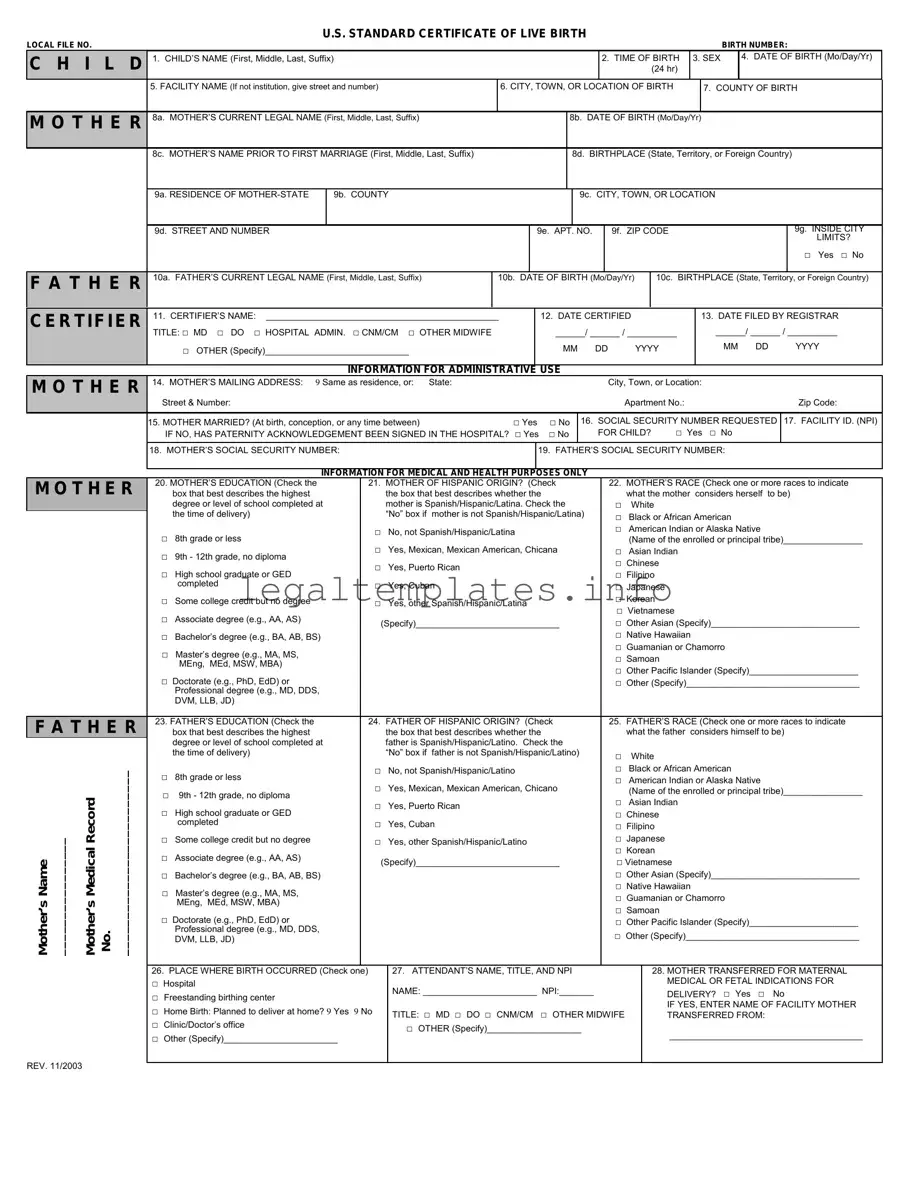What is the purpose of the CDC U.S. Standard Certificate of Live Birth form?
This form serves as an official record of a birth within the United States. It documents vital information including the newborn's name, time and place of birth, parentage, and other relevant demographic details. This certificate is essential for legal identity, citizenship, access to personal rights, and eligibility for benefits.
Who is responsible for filling out this form?
Typically, medical professionals who attend the birth, such as doctors, midwives, or nurses, are responsible for completing the majority of the form. The parents of the newborn are also required to provide certain pieces of information, especially regarding family history and demographics.
When should the Certificate of Live Birth be filed?
The form should be filed with the local health department or the vital records office shortly after the birth, usually within 5 to 10 days. Timeliness ensures the accurate and legal recording of the birth.
Is the Certificate of Live Birth the same as a Birth Certificate?
No, they are not the same. The Certificate of Live Birth is the initial document filled out when a baby is born, containing detailed information about the birth and the individuals involved. A Birth Certificate is a government-issued document that certifies the birth facts, and it's derived from the Certificate of Live Birth.
What happens if information on the Certificate of Live Birth is incorrect?
If there are errors on the certificate, they should be corrected as soon as possible by contacting the vital records office in the state where the birth occurred. Each state has its procedure for amending a birth record, and it often requires submitting documentary evidence of the correct information.
Can anyone get a copy of the Certificate of Live Birth?
Access to the Certificate of Live Birth is usually restricted to immediate family members, legal guardians, or representatives with a valid reason and the necessary legal documentation to obtain it. States may have different rules on who is eligible to request a copy.
How can I obtain a copy of a Birth Certificate derived from the Certificate of Live Birth?
To get a copy of a Birth Certificate, you need to request it from the vital records office in the state where the birth occurred. This typically requires submitting a request form, providing valid identification, and paying a processing fee. Online, mail-in, and in-person options are available in most states.
What information is needed to request a Birth Certificate?
You will need to provide the full name of the person whose Birth Certificate you are requesting, the date and place of birth, and the parents' names, including the mother's maiden name. You must also include your relationship to the person and the reason for the request, along with your contact information.


